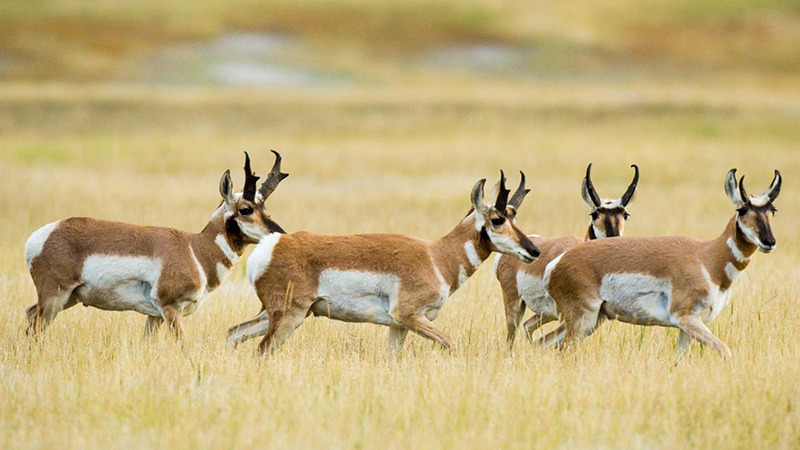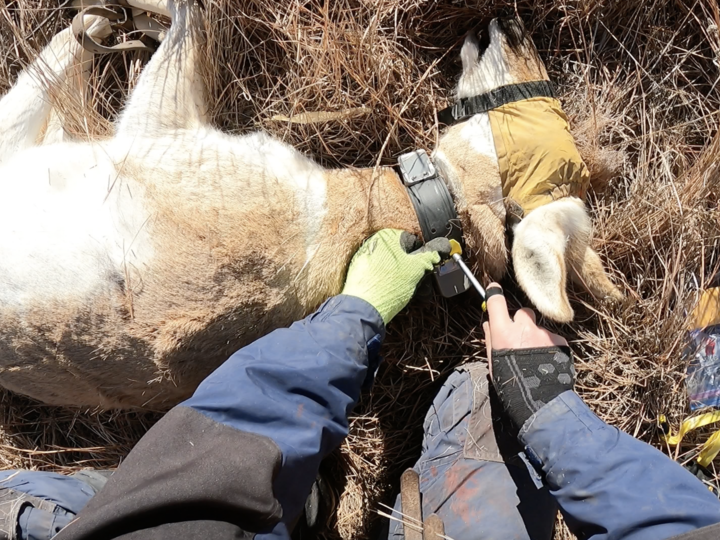
Photo by Nebraskaland/Nebraska Game and Parks Commission
Project Team
Graduate Students
Collaborators
- Andrew Little
- Dustin Ranglack
- Sarah Sonsthagen
Funding Source
Goal:
This study aimed to understand pronghorn movement and resource selection, identify migration corridors and critical ranges, and evaluate spatiotemporal distributions and survival of adult pronghorn. By doing so, we hope to better inform management decisions and help guide the development of strategies to conserve pronghorn while protecting the assets of Nebraska’s ranchers and landowners.
Description:
Pronghorn (Antilocapra americana) populations have fluctuated drastically since the early 1900s due to shifts in land use resulting from westward expansion across the United States. Today, pronghorn in Nebraska roam the western part of the state to the Sandhills, the eastern most edge of the species’ current range. Observations from wildlife managers, farmers, and ranchers indicate that, while capable of migrating vast distances, pronghorn along the edge of their range tend to move less and often occupy cropland. With 92% of Nebraska land being used for agricultural production, it is important to understand how pronghorn navigate this ever-changing landscape.
In February 2021, our team worked with a helicopter crew to capture and radio collar 80 adult pronghorn in western Nebraska. In 2022, 30 additional pronghorn were captured and collared, increasing our sample size to 110 animals. The GPS collars collected a precise location of the individual every 2.5 hours. These fine-scale data points will allow us to closely monitor daily movement and survival. The collars remained on the pronghorn until 2023, when they automatically dropped off and were collected from the field.
With this data, our study:
- Identified patterns in pronghorn movement and resource selection
- Monitored survival rates
- Evaluated how these factors differed across different time and spatial scales
This project was a collaborative effort between UNL and the Nebraska Game and Parks Commission.
Project Updates

